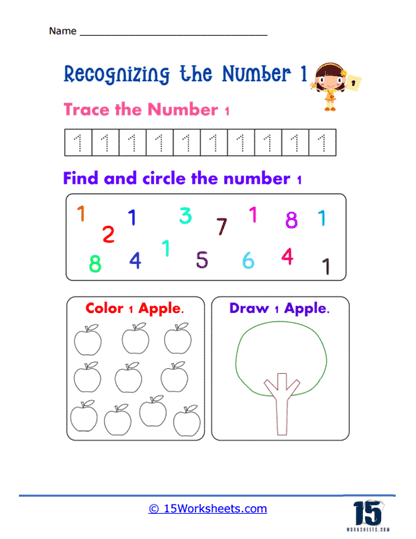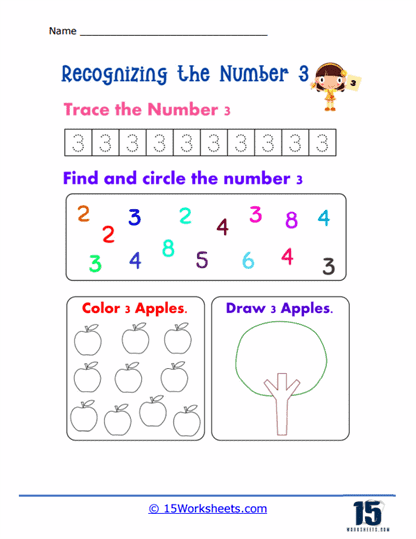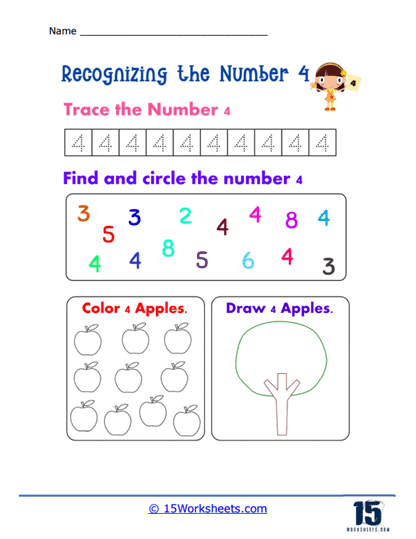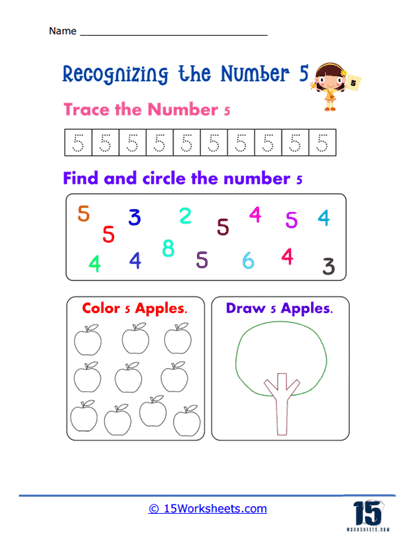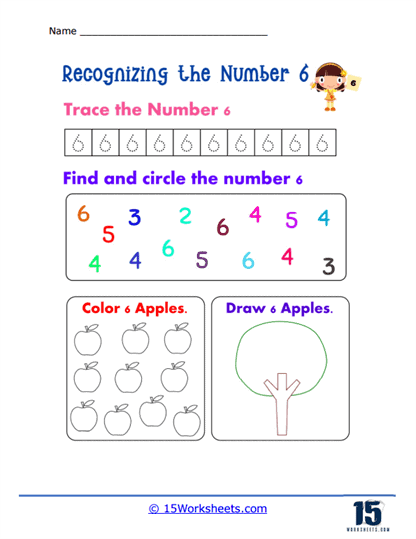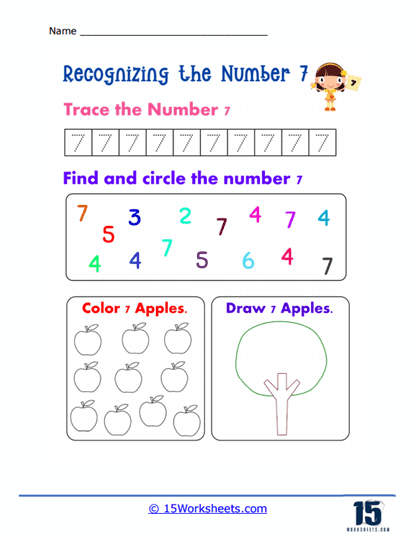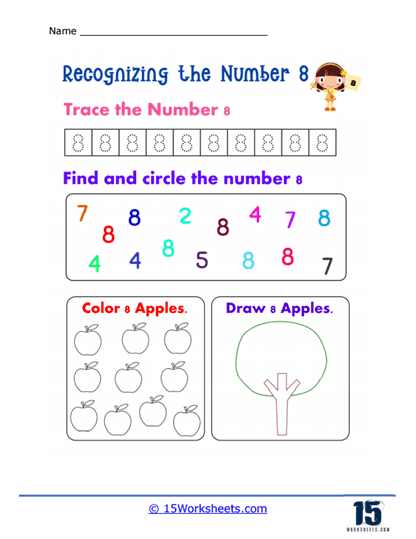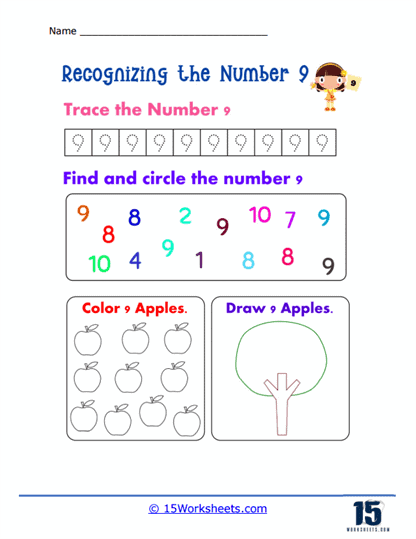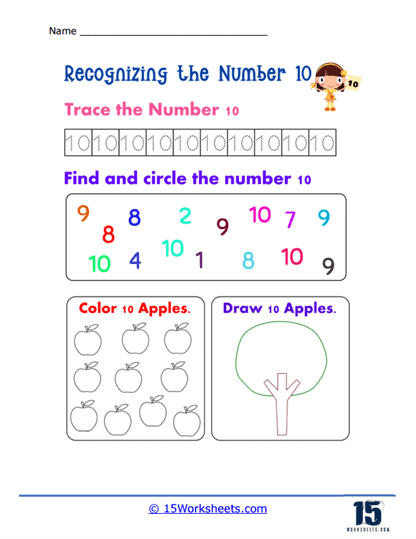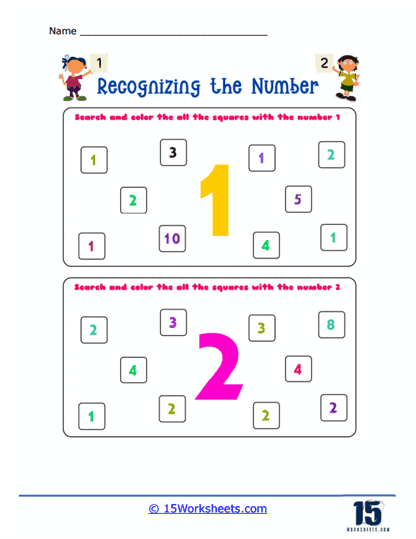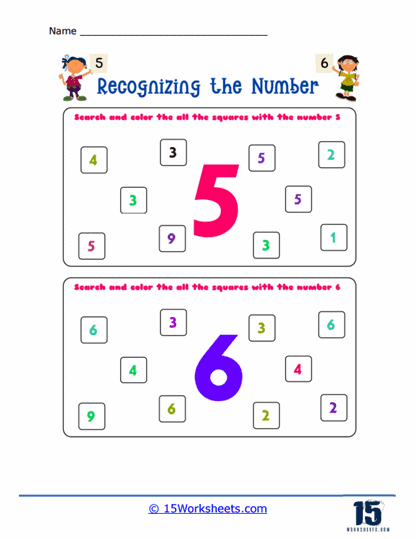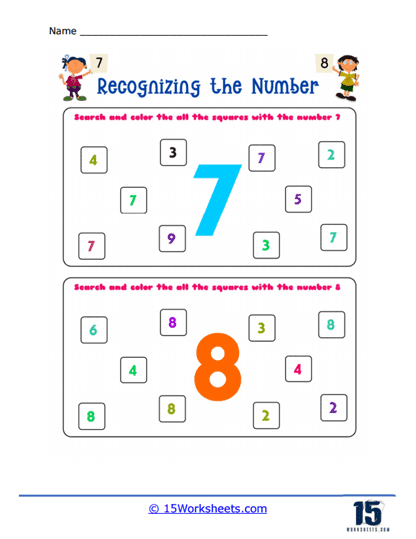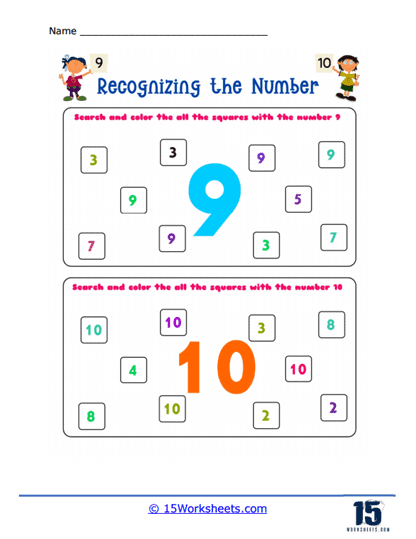Recognizing Numbers Worksheets
About These 15 Worksheets
Recognizing numbers worksheets are designed to help children learn and practice identifying and recognizing numerals, number words, and various representations of numbers. They focus on building children’s early numeracy skills, number recognition, and number sense, which are essential for success in mathematics.
Recognizing numbers worksheets can come in various formats, such as:
Matching – Worksheets may require children to match numerals to their corresponding number words, representations, or vice versa.
Find and Circle – Children may need to find and circle specific numerals or number words among a mix of numbers and letters.
Counting Objects – Worksheets might ask children to count objects and identify the corresponding numerals or number words.
Coloring – Worksheets could require children to color objects or shapes based on the numeral or number word provided.
Number Recognition Games – Worksheets may include simple games or puzzles, such as mazes or dot-to-dots, which require children to recognize and follow numerals or number words to complete the activity.
What Are Educational Benefits?
Recognizing numbers worksheets offer several benefits for children:
Number Sense – These worksheets help children develop a strong foundation in number sense by understanding and recognizing numerals, number words, and various representations of numbers.
Visual Discrimination – Recognizing numbers worksheets require children to visually discriminate between different numbers, improving their attention to detail and visual perception skills.
Reading Skills – When working with number words, these worksheets also reinforce children’s reading skills as they learn to read and recognize number words.
Confidence – Mastering number recognition builds confidence in a child’s mathematical abilities, setting the stage for success in more advanced math topics.
Foundation for Learning – Practicing number recognition is essential for building a strong foundation in early numeracy skills, which is crucial for children’s success in mathematics.
How To Teach This Concept
Helping students recognize numbers is an essential part of building a strong foundation in early numeracy skills. Here are some tips and strategies to assist students in recognizing numbers:
Repetition and Practice – Provide ample opportunities for students to practice recognizing numbers through various activities, worksheets, games, and daily routines. Repetition helps reinforce number recognition skills and build confidence.
Number Songs and Rhymes – Singing songs and reciting rhymes about numbers can help students remember and recognize numbers more easily. Songs and rhymes with catchy tunes and repetitive patterns make learning numbers engaging and fun.
Visual Aids – Use visual aids such as posters, flashcards, number lines, and charts to display numbers in the classroom. Encourage students to refer to these visual aids when they need assistance recognizing numbers.
Hands-on Activities – Engage students in hands-on activities that involve recognizing and working with numbers, such as counting objects, sorting and categorizing items by quantity, or playing board games that involve number recognition.
Number Games and Puzzles – Make learning fun by incorporating number games and puzzles into your lessons. Activities like bingo, memory matching, or puzzles that involve recognizing and matching numerals can be both engaging and educational.
Real-world Connections – Help students see the relevance of number recognition by connecting it to real-life situations, such as reading price tags, measuring ingredients for cooking, or identifying house numbers.
Multi-sensory Approaches – Use a variety of teaching methods that engage multiple senses, such as auditory, visual, and tactile learning. For example, have students trace numbers with their fingers, build numbers with manipulatives, or listen to and repeat number words.
Teach Number Words – Teach students to recognize numbers in written form (e.g., “one,” “two,” “three”) alongside numerals. This will help them understand the relationship between numerals and number words and strengthen their overall number recognition skills.
Encourage Number Talk – Encourage students to talk about numbers and their properties during class discussions, group activities, or while working on math problems. This promotes a deeper understanding of numbers and their relationships.
Differentiate Instruction – Recognize that students learn at different paces and may have different learning needs. Differentiate your instruction by providing varied activities and resources that cater to different learning styles and abilities, and offer individual support when needed.

